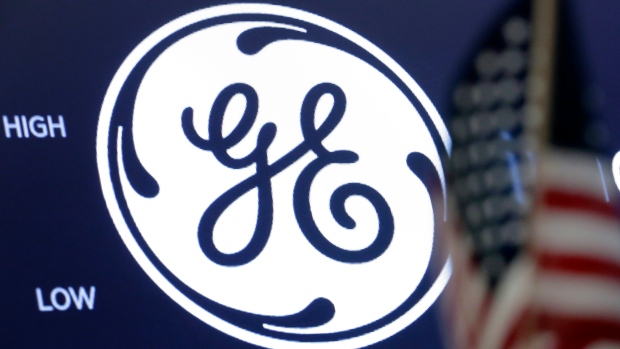Feb 25, 2019
GE surges on US$21.4B sale of bio-pharma unit to Danaher
, Bloomberg News

General Electric Co. (GE.N) is taking a big step toward its goal of deleveraging its US$121 billion debt load by selling part of its fast-growing life sciences division.
The industrial giant agreed to sell its biopharma business to Danaher Corp. for total consideration of US$21.4 billion to help pay down debt, according to a statement Monday. The transaction is expected to close in the fourth quarter of this year.
Chief Executive Officer Larry Culp, who took the reins at GE in September after successfully turning around Danaher, has prioritized the three “Cs” of customers, competition and cash flow in turning around GE. He’s already slashed the company’s quarterly dividend and announced several smaller asset sales to ultimately bring net industrial leverage down to 2.5 times a measure of earnings in an effort to regain a single-A credit rating.
“This deal takes us approximately two-thirds of the way toward our goal of reducing net industrial leverage to 2.5 Ebitda,” Culp said Monday in an interview, referring to earnings before interest, tax, depreciation and amortization. “It’s not a declaration of victory. We still have plenty of work to do, and we will be doing other things over time.”
GE’s bondholders applauded the news. The risk premium on one of its most-actively traded notes, the 4.418 per cent due 2035, tightened 29 basis points to 222 basis points over Treasuries, according to Trace bond price data. The cost to insure against a GE default dropped to the lowest in four months, according to prices compiled by CMA. GE’s shares jumped 7.5 per cent to US$10.94 at 3:07 p.m. in New York.
Once an icon of financial stability, GE has fallen from grace as weakness in its power unit and high debt levels have left the company fighting a multiple-front crisis. Not only have shareholders lost billions in market value, bondholders have suffered as well from multiple credit downgrades. It’s now rated three levels above speculative grade at all three major ratings firms with stable outlooks at Moody’s Investors Service and S&P Global Ratings while carrying a negative outlook from Fitch Ratings.
GE had previously planned to separate its health-care unit, which includes life sciences operations, via an initial public offering, but those plans are off the table now, the company said. The biopharma sale is credit positive as GE will still retain most of the earnings from health care, one of its most profitable businesses, S&P said in a report Monday, maintaining the BBB+ rating. Moody’s and Fitch echoed the sentiment in a separate statement.
While the sale represents “a major step” in cleaning up GE’s overleveraged balance sheet, it may not be enough to spare the company from further rating activity, Bloomberg Intelligence analyst Joel Levington said in a report Monday. GE will net US$20 billion from the transaction to apply toward its debt reduction goals, he said.
On the flip side, the all-cash purchase could endanger Danaher’s single A credit ratings, Levington said. It’s already planning a US$3 billion equity sale and potentially new debt to help pay for GE’s business, Danaher said in a statement Monday. The company is spinning off its dental unit, which will largely absorb its debt capacity, Levington said. Moody’s said Monday it may cut Danaher’s rating by multiple notches.


